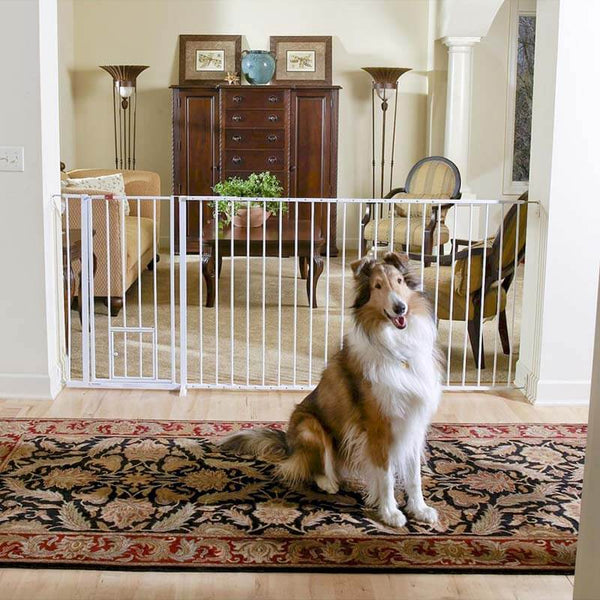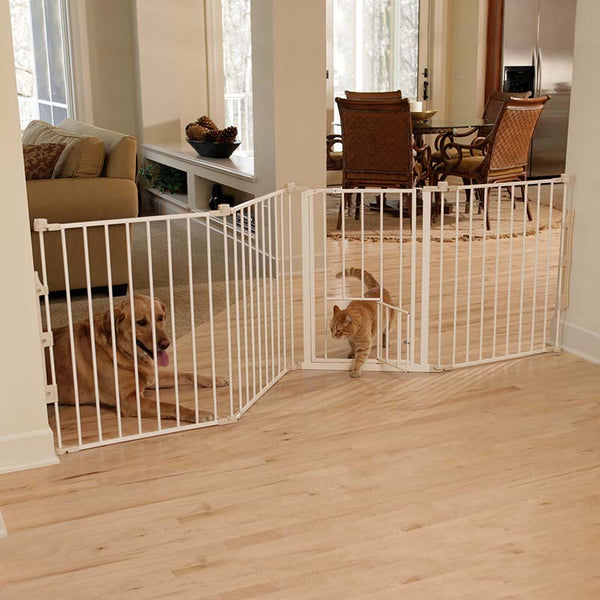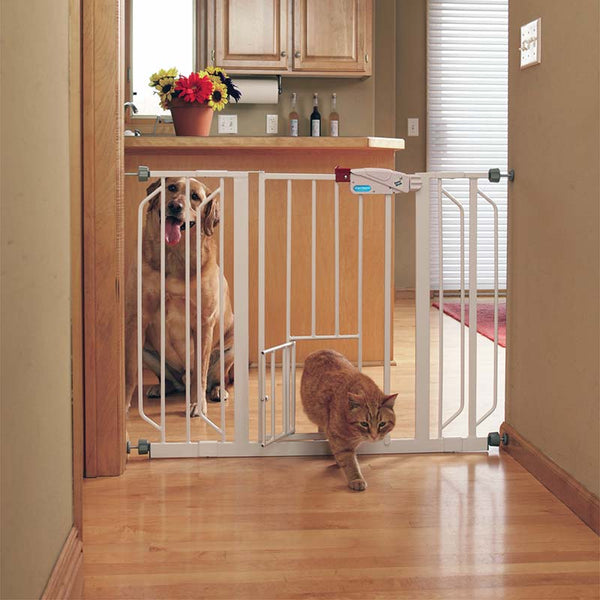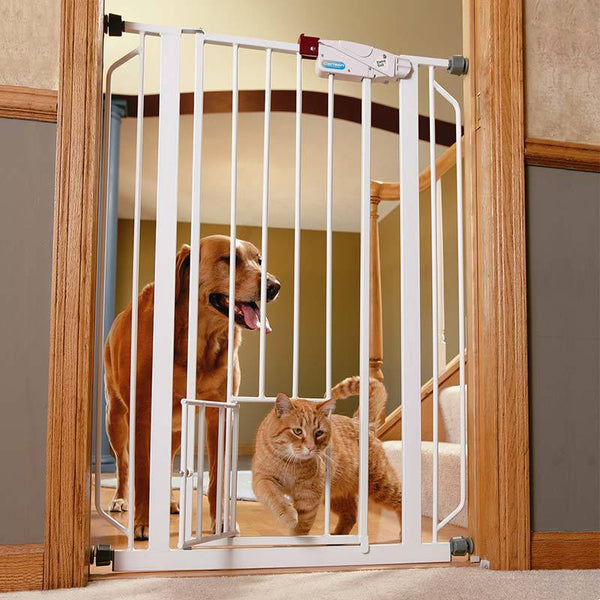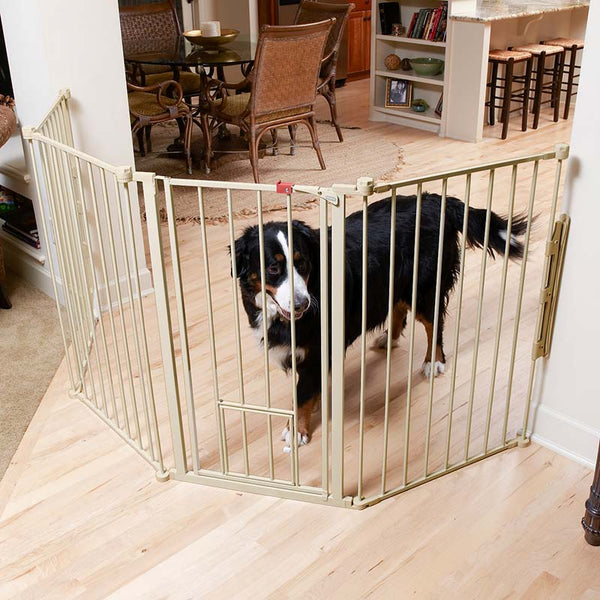Training Your Dog Not to Bolt Out of the Door / Door Manners
By Jess Rollins
Copyright Info
Door manners are an important safety skill especially for dogs that like to escape and explore. It is meant to teach your dog to only exit through doorways to the outside when he is told to do so. It is not fool-proof so you will need to also train the people in the house to keep the doors closed!
|
Step 1: Decide what your word for giving permission to exit the door word will be. Ideally it should be a word that you won't use casually. A good example is "exit". From now on all family members will need to say "exit" before allowing the dog to exit the house or car door. Begin using "exit" when you allow him out of the important doorways even if you have not completed this training and he has not learned to wait. This will help him begin to associate the word "exit" with the act of going through a doorway. |
|
Closing the door when Gigo approaches it without being told "exit" Step 2: Begin teaching door manners by securing your dog to a tether so that he cannot exit out of the house door if he tries. Have food treats available to reward him.
Continue practicing this until he is consistently not approaching the door when it is opened a few inches. P/R (praise and reward) each time he decides to wait. |
|
Gigo sits and waits when the door is opened a crack Step 3: To make him even less likely to escape through doorways, we will now teach him to sit or lay down each time you open the door.
|
|
Step 4: Now while he is still tethered, practice opening the door up wider and wider until you can open it all the way with him sitting or laying down. Reward him each time he sits or downs while the door has been opened and close the door each time he tries to go through it without permission. |
|
Step 5: Put him on a leash. Open the door all of the way. If he sits or lies down while it's open, say "exit" and then take him through the doorway. Being told "exit" and going through the doorway is a privilege for your dog that he receives for waiting, and so there is no need to feed him a treat. If he tries to go through the door, close it. |
|
Step 6: Tie him back so that he cannot make it out of the door if he attempts it. Exit through the door yourself. Reward him for remaining sitting or laying down while you exit the doorway. |
|
Gigo sits and waits while a ball flies through the open door Step 7: Tie him back so that he cannot make it out of the door if he tries. Set something of interest to him on the other side of the doorway. Reward him for remaining seated or laying down instead of going to get the item. |
|
Gigo sits and waits to be Step 8: Repeat steps 3 through 7 with other important doorways in your home and in the car. Also practice having him wait while someone opens the door to come in. |
|
Step 9: Repeat steps 3 through 8 but instead of using the tie-back, tether or leash, use a lightweight 25' rope which will drag behind your dog in case you should need to catch him. Practice first using a doorway which does not lead to nearby street traffic or another unsafe area. Then repeat steps 3 through 8 again with no rope or leash at all if you feel absolutely sure that this is safe. |
|
Step 10: To keep up this behavior for his lifetime, continue to allow him to exit the doorway only after he has sat or laid down and you have said "exit". Always close the door if he attempts to go through the doorway without sitting or lying down and waiting to hear "exit". |
| Note: Even if you work at this diligently, it is conceivable that at some point your dog may make a mistake and go out of a door without permission. Be careful to make sure your dog does not get an opportunity to make a fatal mistake and escape from your home into traffic. |










